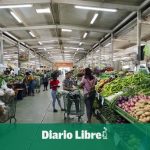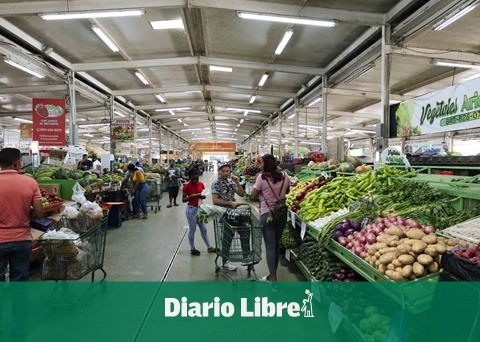The multiple shades of blue of the Bacalar Lagoon, in the state of Quintana Roo, disappeared due to torrential rains and turned to a brown color that extends to the most touristic area.
With the first rains of the storm and hurricane season, the lagoon has been repainted brown and green, warns Efe this Saturday David Martínez, a member of Guardianes de la Laguna, an organization that was born with the 2020 Cristobal storm to defend the environment in Bacalar.
In June 2020, the Cristobal storm discharged volumes of water on the Yucatan Peninsula, especially on Campeche, from where the runoff went to the Bacalar Lagoon, popularly known as the “seven-color lagoon” and located 40 kilometers from the border with Belize.
After the passage of the cyclone, the body of water was left with the worst appearance in its history, from which it had not yet fully recovered.
«The bad thing is that now there is no mangrove barrier that helped us two years ago, because Cristobal destroyed about 30 kilometers of mangrove. Last time the justification was that the rains were atypical, but this time it is a ‘normal’ rain, it is not even a storm or hurricane. And we already see the lagoon as brown. Imagine what awaits us,” Martinez said.
DANGER ORGANISMS
Then and now, the runoff arrived loaded not only with rainwater, but also with loose soil resulting from deforestation, organic matter, garbage, agrochemicals and other toxic substances accumulated over time, Alfredo Yáñez, a researcher at Colegio de la Frontera, told Efe. South (Ecosur).
The academic is concerned about the impact of the phenomenon on the chivita snails and the microbialites, inhabitants of the Bacalar Lagoon.
The first is an endemic species that suffered a massive death after the passage of Cristobal, and the second are the oldest living organisms on record, the first oxygenators of the Earth and now allies against climate change, for being kidnappers of carbon.
The microbialites –better known as stromatolites– from the center and south of the Bacalar Lagoon are in the process of fossilization, because the pollutants such as ammonium and nitrate that mass tourism contributes, the agrochemicals sprayed on the surrounding crops and the irregular dumping of water black have caused its deterioration, Yañez explained.
And the runoff, he continues, brings more contaminants and nutrients that worsen the quality of the water in the Lagoon and, consequently, the health of the microbialites.
The currents will carry away the dirty water in the coming weeks and months, but the human factors that impact the ecosystem will persist.
“It has been normalized that the lagoon alone recovers its natural condition, but in the jungle we will continue to change the landscape and, consequently, affect nearby bodies of water,” he concluded.
LOSE WATER QUALITY
This lagoon is one of the few bodies of permanent surface water in the Yucatan Peninsula, whose calcareous soil does not allow the surface retention of the liquid, which is why underground currents and cenotes are formed.
Bacalar, whose name comes from the Mayan Sian Ka’an Bakhalal (place surrounded by reeds), is today one of the most attractive tourist destinations in the Yucatan Peninsula.
The 42 kilometers long and the beauty of its lagoon allow the practice of all kinds of water sports, in addition to the slow pace of its streets is a great attraction for Mexicans and foreigners.
Teresa Álvarez Legorreta, also an Ecosur researcher, has been taking water samples in the Bacalar Lagoon since 2010 to check its quality. The comparison of the shots of that year with those of 2020, after the passage of the Cristobal storm, seems “worrying”.
In addition to nitrogen and phosphorus, Álvarez has found pesticides, heavy and toxic metals such as mercury and cadmium, and others such as lead, copper, zinc, as well as agrochemicals and hydrocarbons, in the lagoon samples.
“The main cause was the extraordinary surface runoff caused by the Cristóbal storm, which, as it passed through agricultural and deforested soils, dragged soil particles and associated agrochemicals,” he told Efe.
These elements, he clarifies, have been found to a greater extent in the center and south of the lagoon, where the city is and tourist activities are concentrated, also near agricultural fields.
Source: EFE Agency.


















